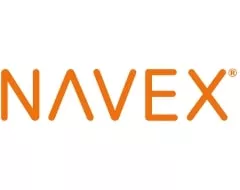Executive Summary :
An effective corporate compliance and ethics program rests on two principles. First, the program must guide the company through today's complex regulatory environment; that's the compliance part. Second, the program must help the company to operate with integrity, a standard of behavior more important to customers, employees and other stakeholders with every passing year; that's the ethics part.
How can a compliance and ethics program operate on those two principles, while navigating the business, technology and social pressures of the day? That is the question NAVEX tries to answer in the annual Top 10 Trends in Risk and Compliance report.
To find those answers, NAVEX consults with trusted industry experts and internal thought leaders and practitioners. Those consulted were asked for their best thinking about what GRC professionals and other leaders should consider and prepare for in 2024. The result is this report in your hands (or on your screens).
Half of the insights in this year's report address the complex regulatory environment we mentioned earlier. For example, enforcement of economic sanctions has been marching up the priority ladder for the U.S. Justice Department – "sanctions are the new FCPA," to quote deputy attorney general Lisa Monaco – and compliance programs will need to adapt to that new reality somehow. The same will be true for new ESG reporting rules, expanded privacy standards, new compliance program guidance from regulatory bodies worldwide.
In other words, 2024 will be a year of compliance and ethics programs responding to specific demands from the regulatory world.
That's not all, however. The other half of insights in this year's report explore how compliance programs will need to respond to broader challenges in how businesses operate and employees work. Here we can look to the arrival of artificial intelligence. Even before regulators develop AI-specific regulations, businesses already have clear governance, risk management, and ethical challenges with how employees are already trying to use AI. Compliance officers can, and should, play a leading role in staying ahead of that challenge before it races beyond our grasp. Again, we can say the same for fraud risk in the distributed workforce, new types of cybersecurity risk driving CISOs and compliance officers to work together, and more.
So, we can also say 2024 will be a year for compliance officers to expand and embed their risk management objectives across the enterprise, too.
The good news is compliance officers can meet all these challenges, thanks to the digital transformation sweeping our industry. A modern, properly configured GRC information system can collect and analyze data so you and the senior management team can make better, more risk-aware decisions and achieve better outcomes – and we expect that trend to continue for years to come.
We hope this year's guide will provide valuable insight for any and all GRC professionals dedicated to meeting the challenges ahead.
To view the full report, please click here.
The content of this article is intended to provide a general guide to the subject matter. Specialist advice should be sought about your specific circumstances.

